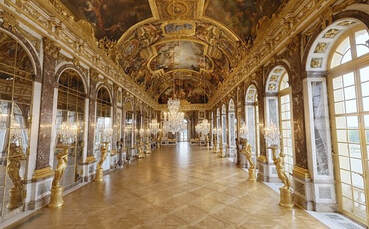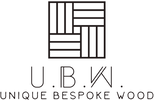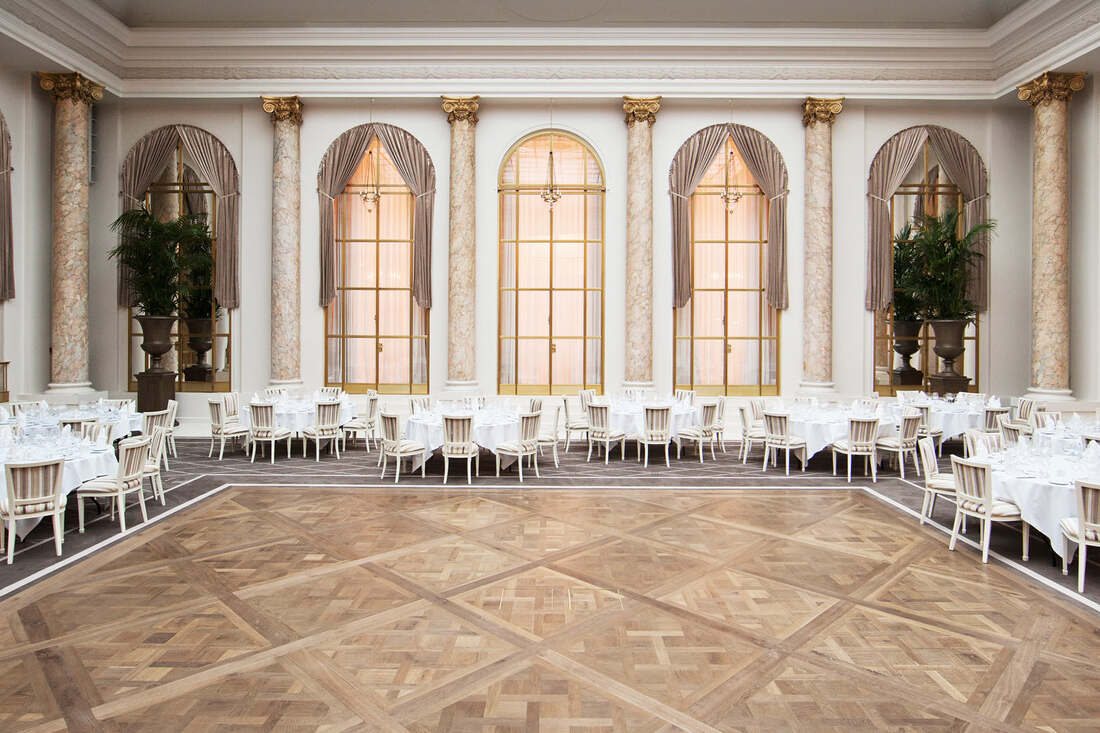 From the Versailles parquet panels synonymous with the palace of the very same name, to the chevron pattern parquet wood flooring to be found within many a modern interior, parquetry boasts an association with elegance and style that is hard to beat. When entering a room with a parquet floor, the impact is instant – and as impressive today as it ever has been. One might wonder, how did the practice of parquetry come about? Here, we will delve into the origins of this spectacular form of flooring, and uncover why it remains so immensely popular as a choice for interiors today. A Cutting Edge Development Within 16th Century France Prior to the arrival of Versailles parquet panels, the mansions and châteaus of France – and indeed much of the rest of the world – were floored with quarry cut marble or stone. Installed over wooden joists, such costly floors were an eternal maintenance challenge, as their weight and the need for wet washing would take its toll upon the timber frames beneath. However, innovation was to lead to a brand new fashion for flooring in 16thCentury France. A new form of mosaic-style wooden flooring was about to take the country by storm – and then Europe, and the world. Initially, wooden blocks were glued to concrete floors, however a more sophisticated technique was on the horizon. The new practice of parquet de menuiserie (woodwork parquet) saw blocks composed into panels, held together by a cutting-edge tongue and groove design. Such a method allowed the creation of marvellously intricate floors, featuring decorative pattern, and even colour variation thanks to the availability of diverse and stunning hardwoods. As such, the art of parquetry was born. This new form of flooring was opulent in appearance, hard wearing, and far easier to maintain than its stonework counterpart. Its name was derived from the Old French parchet, meaning a small enclosed space, and it was to become a prominent feature of French interiors over the next century. Of course, it was the palace of Versailles that was to elevate this style of flooring to international notoriety. A revolution in French interior design was about to begin, and it was to create an allure that would make the nation's aesthetic one of universal aspiration. Captivation Within The Palace Of Versailles King Louis XIV oversaw construction of the Palace of Versailles in 1682, on a site that had once been inhabited by a modest hunting lodge. This new construction was to exhibit a scale of decadence never seen before – and hardly challenged since. From endless gilt work to solid silver furnishings, everywhere the eye could be cast was populated with the greatest fineries. Beneath these many monuments to wealth was the consistent visual element of parquetry – the spectacular shine and intricate grain of the finest woodwork. Almost every room of the palace was laid with Versailles parquet panels. This particular form of parquet can be immediately recognised by its distinct square pattern, set on a diagonal to the space it inhabits. From its introduction within the great palace to its place within modern interior design, the Versailles floor motif has remained tied by name to this fascinating moment in French history. One room of the palace, however, deviated in design, featuring a different form of parquetry all together – the Queen's Guard room. Within this lavish chamber, chevron pattern parquet wood flooring was chosen. This single room marked the beginning of an interior aesthetic that enjoys particular demand today, more than 300 years after its first inception. Chevron parquet flooring, beside herringbone parquet, can be noted as parquetry form of choice for the current Millennium. Returning to the Palace of Versailles, upon its completion, King Louis XIV moved the entire French Court to this new home of grandeur, where it would remain until the French Revolution began in 1789. The Arrival Of French Parquet In England French design was to travel to England with Queen Henrietta Marie of France, when she married Charles I of England, and began a new life in London. Somerset House, then known as Denmark House, was to become the new Queen's home, and it was quickly decked out in the latest French fashion. The lavish Tudor house was entirely remodelled and refurnished, under the watchful eye of celebrated English architect Inigo Jones. Alongside his propensity to employ Vitruvian rules of proportion and symmetry in his buildings, Jones was an aficionado of French parquetry, and incorporated it as an elegant reminder of the Queen's noble heritage. A Flooring Trend Set To Repeat Throughout The Ages From this moment, Versailles parquet panels, chevron pattern parquet wood flooring, and a variety of other parquetry patterns were to become a firm fixture within luxurious interior design globally. Casting back to France, parquetry was to feature first as a mark of wealth, and then, thanks to Baron Haussmann's push to re-invigorate Parisian style in the 19th century, simply an iconic feature of French homes universally. This trend was mirrored around the world, as a popular, practical and beautiful method of flooring, and remained so until the 1930s when modern synthetic carpets became the fashion. At this moment, tragically, many fine examples of parquetry were lost, although some were merely covered. Moving into the 21st century, the glorious aesthetic of French parquet has seen a dizzying revival, with many a floor rediscovered. Versailles parquet panels remain classically fashionable, however it is chevron pattern parquet wood flooring that captivates the interest of designers and property owners today – appearing within modern homes, offices, retail spaces, bars, and restaurants. Perhaps it is the incredible versatility of this French style of flooring that draws such attraction. While some favour traditionally styled parquetry, others opt for rebellious or minimalist wood finishes, and a variety of wood block sizes, set in a diversity of angles. Parquetry remains as impactive in terms of wow-factor as it ever has, while also serving as a highly functional, practical, and easy to maintain floor for any functional space. Better yet, thanks to contemporary innovations in floor engineering, parquetry can withstand a diversity of climates, and even be laid over underfloor heating. Today, the aesthetic of French parquet can grace any interior, for affordable and enjoyable style that will never go out of fashion. If you would like to explore the potential of exquisite parquetry for your own design project, contact Unique Bespoke Wood today, for expert guidance towards the French parquet floor you envision.
1 Comment
Clifton
5/28/2021 03:18:25 am
I admire the flooring installed some and love it would like to be part of history and trend
Reply
Leave a Reply. |
- Home
-
Collections
- Timeless - Engineered Wood Flooring
- Solid Wood Flooring
- Chevron Parquet Flooring
- Parquet
- Wide Plank Wood Floor
- Live Edge Wood Flooring
- Engineered Ash Wood Floor
- Engineered Walnut Wood Floor
- Textured Wood Flooring
- Versailles Parquet
- Parquet Panels
- Mansion Weave Parquet
- Antique Wood Flooring
- Wood Cladding
- Charred Wood
- Wood For Stairs
- Unfinished Wood Flooring >
- Bespoke Wood Floor
- Services
- Information
- Room Ideas
- BLOG
- Contact
- FAQ
- Trade Program
|
|
|
UNIQUE BESPOKE WOOD
74/76 MONTROSE TERRACE, EDINBURGH, EH7 5DP
UNITED KIGDOM
[email protected] / 01316529873
74/76 MONTROSE TERRACE, EDINBURGH, EH7 5DP
UNITED KIGDOM
[email protected] / 01316529873
FOLLOW US ON SOCIAL MEDIA
© COPYRIGHT 2022. ALL RIGHTS RESERVED.


 RSS Feed
RSS Feed